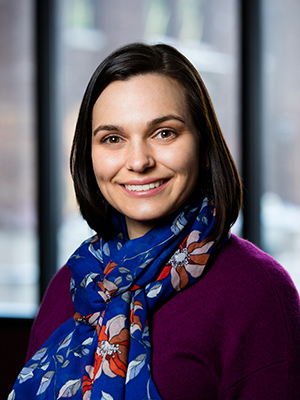
Every year, health experts recommend that nearly nearly all people six months and older get the flu vaccine, yet only about 50 percent of eligible people in the United States actually get vaccinated. When people forgo getting the vaccine, they also reduce their community’s “herd immunity”—the protection that occurs when a high proportion of people are vaccinated against a specific virus or pathogen.
School of Public Health graduate Jacqueline Logan (MPH ’17) and Assistant Professor Nicole Basta led a study to investigate if people consider the benefits to their community, such as herd immunity, when deciding whether or not to get a flu shot. The study also assessed if teaching people about these community benefits would increase their willingness to get vaccinated and if they had an accurate estimate of the vaccination coverage levels in their home county.
The study’s findings were recently published online in the journal Vaccine.

The researchers surveyed 554 Minnesota adult residents who visited the University’s Driven to Discover Building during the 2016 Minnesota State Fair. Participants were asked to identify the definition of herd immunity; report their history of influenza vaccination, plans to receive the influenza vaccine that year, and concerns about influenza; and to estimate the actual influenza vaccination coverage in their county. The researchers provided participants with educational information about the benefits of herd immunity along with accurate county vaccination rates, then asked them again about their vaccination plans and concerns.
“We found that by educating people with very basic information about the important community benefits of vaccination, we could significantly improve their plans to get the flu shot,” says Basta. “This increase was especially high among those who knew nothing about how vaccination benefits the community.”
Among other key findings:
- Prior to the educational intervention, one-third of people did not know how their decision to get the flu vaccine could help others. They were also least likely to plan to get vaccinated in the upcoming flu season.
- Providing education about the benefits of maintaining high vaccination coverage to those who were unaware of the community benefits of vaccination increased their willingness to get vaccinated by 7.3 percent.
- Approximately 75 percent of people thought the flu vaccination coverage in their county was much higher than the actual reported amount.
“It is important that everyone is aware of how their own decision to get the flu vaccine has an impact on others,” says Basta. “Getting vaccinated provides protection to the individual, of course, but an individual’s decision also contributes to protecting communities and even those who cannot be vaccinated. Those not planning to get the flu vaccine this year should consider how their decision will affect their community as they will be missing an opportunity to help prevent outbreaks and protect everyone.”
The researchers recommended that providers administering vaccinations emphasize both the personal benefits of vaccination in protecting individuals from getting the flu and the community benefits of preventing outbreaks to raise awareness about the need to increase vaccination coverage. Additionally, this study suggests there is an important opportunity for researchers to improve communication about the community benefits of vaccines.
